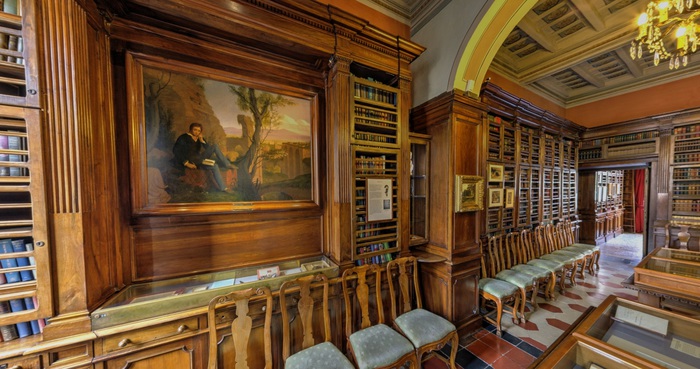ROME - Seduced by the architectural and landscape beauty of Rome but above all attracted by its mild climate, the English poet John Keats chose to live in the capital to seek relief from tuberculosis, a disease that was consuming him and that had already killed his mother and brother.
He found an apartment on the second floor of the central Piazza di Spagna at number 26, on the right side of the steps of Trinità dei Monti.
He lived in that apartment with his faithful friend and painter Joseph Severn and other English artists, all passing through during their Grand Tour in our country.
But in the heart of Rome, in what is now a house full of precious testimonies and literary tributes, the young author of Ode to a Nightingale died prematurely on February 23, 1821. He was just 25 years old but his hatred and his talent had already included him among the most authoritative and significant voices of English Romanticism.
Today the poet's house-museum, where Lord Byron and Percy Bysshe Shelley also passed by, is preparing to celebrate the two centuries since his death with virtual guided tours in the apartment where Keats died of tuberculosis and among the rooms that house portraits and manuscripts , furniture and memorabilia of Keats and other great English poets, all in love with Rome.
In addition to the two exhibition rooms of the Keats-Shelley Memorial House, visitors can also visit the terrace, a tea room, a book shop, a small room for the projection of videos on romantic poets and above all one of the most beautiful and richest libraries of literature. romantic in the world, with over 8 thousand volumes.
In addition to the bicentennial celebrations, there is also a series of video-stories shot in the house-museum, including the immersive film "The Death of Keats", with the narrating voice of Irish rock star and actor Bob Geldof, ambassador of the Keats initiative -Shelley200.
The innovative and engaging video-story tells of his trip to Italy, his stay in the apartment in Piazza di Spagna and his disappearance through the reading of Keats's letters.
Inaugurated in 1909, the museum dedicated to Keats and Shelley is a journey into English Romanticism, a sanctuary dedicated to all those artists from across the Channel who found inspiration in the bucolic Italian landscapes.
In reality, the furniture and objects left by Keats in his room are not the original ones because all his possessions were burned immediately after his death to prevent, according to the beliefs of the time, the spread of the disease.
Yet entering the room that overlooks the famous square one has the sensation of seeing the poet intent on reading and writing on his desk.
The only two original objects are the fireplace and Keats's death mask placed next to the bed.
The virtual guided tours of the house-museum start on February 23, the day of the commemoration, and can be booked on the website: ksh.roma.it But the homages of Rome do not end there: John Keats was buried in the non-Catholic cemetery of Testaccio, near the Pyramid Cestia, a place of peace and great charm.
Next to Keats's tomb, on whose tombstone we read "Here lies a man whose name was written on the water", rests his lifelong friend, the painter Joseph Severn who died 58 years after the poet's disappearance.
Not far away a plaque reminds us that here, in the English Cemetery, as it is called, the ashes of Shelley, another great British poet and great friend of Keats, were scattered.
When, in 1877, Oscar Wilde visited the tomb of the one he considered the greatest poet of the century, he defined the non-Catholic cemetery as the holiest place in Rome.
Years later, in 1881, he dedicated the sonnet The Grave of Keats to the young romantic poet, exhibited today in the hall of the house-museum.
(HANDLE).

